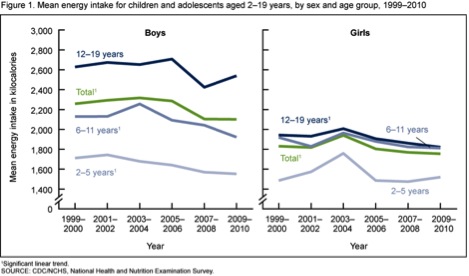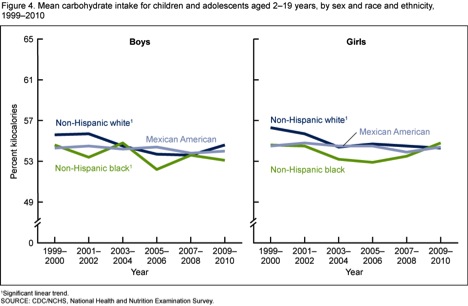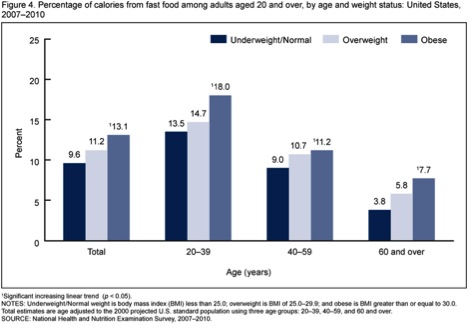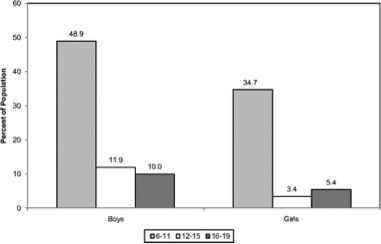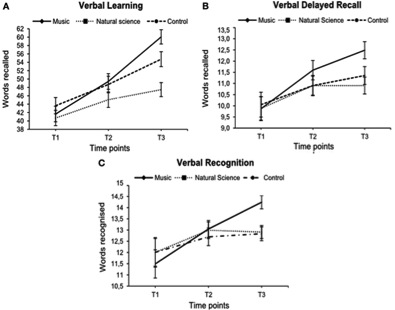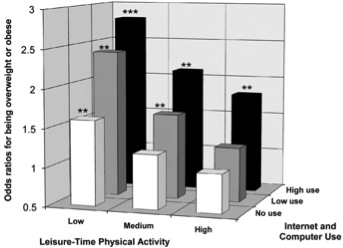Archive for the ‘Research and Health’ Category
Medical Ignorance vs. Dietary Salt and Breast Cancer
Recent news reports have highlighted uncertainty about dietary sodium guidelines and also the diagnosis and treatment of breast cancer. When the breast cancer story came out a friend of mine e-mailed and asked for help in making sense of it all. I want to share parts of my response to her with you and also how it applies to things like the shifting dietary salt guidelines. Here are some things about medical “knowledge” that are not widely appreciated:
- We have the ability to detect “abnormalities” that are at the edge of our knowledge.
- When we detect these things, what do we do…….everything, nothing, something in between?
- There is frequently a bias in medicine to do more. However, every intervention has risks and potential unintended consequences. Where is the balance? How much risk are you comfortable with? How can Drs. explain these nuances to patients?
- Clinical trials are great, but they are average results and the best scientific advice for thousands of people may not be the best for you. For all trials there are responders, non-responders and sometimes even adverse responders. This is especially true for salt and blood pressure. At some level it is a roulette wheel, and all we can do is play the odds.
- Progress against cancer, especially solid tumors, has been really slow. There are lots of reasons for this including the idea that there are metastases by the time things are detected. There are also issues related to basic tumor biology and how fast tumors grow vs. the toxicity of drugs for other tissues. Finally, tumors have a tremendous ability to adapt and work around drugs.
- We are trapped in cycles of relative ignorance, over simplified dogmatic responses, followed by more insight. For example the current idea is that when we can genetically finger print individual cancers “cures” will flow from this knowledge. A more sober interpretation might be that we will be able to pick and develop better drugs for each individual and improve the odds of a better outcome (note I did not say cure).
- Disease advocacy groups are wonderful, but sometimes the culture of disease advocacy leads to sound bited messages for really complex things.
- Things in a number of areas of medicine that had pretty hard core guidelines when I started medical school in the early 80s (for example how we treat heart attack and heart failure, and how we set the ventilators in the intensive care unit) have evolved or even changed 180 degrees since that time. Outcomes are better but these sorts of sea changes are challenging for everyone. This happens all the time.
As a result of all of these things (and more) there are lots of educated guesses in medicine. There is also tension related to research and the need to make “constructive mistakes” to further knowledge and offering people “error free” state of the art care, with the ambiguous caveat that the state of the art changes. At some level, the more we know the less we know.
Obesity: Who is Responsible?
On a recent plane ride I had a window seat with a trim lady in the aisle seat. The middle seat was then occupied by a short but large man who sat down and immediately fell asleep and started to snore. When he woke up just prior to takeoff he apologized and commented “the Drs. tell me there is nothing they can do about it…….” This man pretty obviously has obstructive sleep apnea (OSA) and he also told me that he does not bring his CPAP device while traveling due to inconvenience. Obesity is a major cause of cardiovascular problems, diabetes and early death. It is also the major cause of sleep apnea which is a dangerous condition associated with all sorts of medical problems including hypertension, diabetes, cognitive impairment, and heart disease to name a few. The issue of large (fat) people on planes is very controversial and some airlines have policies requiring people to buy two seats. However, I want to talk about the “they” concept noted above.
Nothing “They” Can Do About It?
When the gentleman next to me said “there is nothing they can do about it,” my internal response was something like, “You are right, Drs. don’t have much to offer you, but there is something you can do about it, namely lose weight.” I held my tongue and went back to my book. However, this experience got me thinking about who is responsible for what, especially when it concerns their own health. This brief conversation also raises issues about how things like insurance premiums should be set for people with controllable diseases, conditions, and/or lifestyle choices.
Is Obesity Contagious?
Losing weight and keeping it off is hard but possible in our obesogenic world. One emerging argument is that obesity is “contagious” and that it travels in social networks with the behavior of friends and families having a major influence on body weight and things like physical activity. This idea is not uniformly accepted, but it is an interesting concept that might stimulate new ideas about how to address the obesity epidemic. Here is a link to an interesting paper on Facebook preferences and body weight; can social networks be used to turn the obesity epidemic around?
Should Insurance Premiums be Adjusted?
One concern is that as long as health insurance premiums don’t consider lifestyle related diseases and risk factors, people that make unhealthy choices are economically shielded from the costs of their behavior. This is also one of the main arguments for sin taxes, and this topic has been in the news recently based on proposals in California to limit the ability of Obamacare to charge higher health insurance premiums for smokers. It is hard to understand the rationale for this move in California. We should also remember that most other forms of insurance are risk adjusted based on our behavior and choices. Why should health insurance be different?
Summary
The U.S. is having major and prolonged discussions about health care costs, outcomes, and payment schemes. To some extent this is also going on in the rest of the world. What strikes me in this whole collection of discussions is how little attention is being paid to policies that promote increased personal responsibility, and the extent to which any of us should pay for “bad behavior and choices” by others. Where do we draw the line? As a society we are all in it together….. up to a point.
Mistakes, Adaptability and Success
Most of us spend a lot of time avoiding mistakes. However, there is a long line of thinking from multiple fields that suggests too much concern about mistakes inhibits risk taking. Along these lines, perhaps the time we spend “looking over our shoulder” avoiding mistakes might be better spent taking risks and learning from our mistakes. Let me give you a few examples.
The Team That Makes the Most Mistakes Usually…….?
The conventional answer to this statement/question is usually “loses”, but the great basketball coach Piggy Lambert felt that the team that makes the most mistakes usually wins! Lambert was also the coach of John Wooden and the point is that he did not want his players to be tentative and he wanted them to take reasonable risks. There are mistakes of action and inaction and all things being equal perhaps mistakes of action are better.
Make the Most of Mistakes!
Viagra was initially tried as a drug to treat high blood pressure and chest pain. The results were marginal. However, many patients with high blood pressure and chest pain also have erectile dysfunction and improved erectile function was a lucky side effect of the failed blood pressure and chest pain studies. More importantly, the fundamental discovery that led to Viagra (made by Robert Furchgott and colleagues) was also a “mistake”, or as Furchgott put it an “accident”. Furchgott’s mistake or accident also led to a Nobel Prize. In fact the history of medical innovation based on mistakes, accidents and serendipity is at least as impressive as the results associated with carefully planned goal directed research and development.
Mistakes and Progress
A lot of “scientifically proven” ideas are later overturned after being hyped or sold as definitive. So, perhaps the goal in science is to have a way to make better use of our mistakes. Here is a link to a recent article on the philosophy of science and the central role of mistakes in what might be termed progress. The article also addresses the difficulty in communicating these ideas to the general public, and here is a key excerpt:
“As the physicist John Wheeler said, “Our whole problem is to make mistakes as fast possible.” Indeed, Karl Popper built an illuminating philosophy of science on the idea that science progresses precisely by trying as hard as it can to falsify its hypotheses.”
I would add to these ideas that the fundamental point of science is to generate questions based on the current state of knowledge and ignorance. I read a terrific quote on this recently in the obituary of Francois Jacob, a pioneering molecular biologist who died recently. Jacob had wanted to be a surgeon, but injuries to his hands in World War II made him redirect his interests towards research.
“What mattered more than the answers were the questions and how they were formulated. For in the best of cases, the answer led to more questions. It was a system for concocting expectation, a machine for making the future. For me, this world of questions and the provisional, this chase after an answer that was always put off to the next day, all that was euphoric. I lived in the future.”
Adaptability is the Key
My friend and colleague Hiroshi Nose recently sent me a very insightful e-mail that included the idea that the essence of life is ambiguity and plasticity in response to environmental change. In other words how do we adapt to the world we live in? This includes the ability to learn from our mistakes. Hiroshi’s observation leads to a larger lesson and an observation by the historian Bernard Lewis on the way things happen in the United States. Lewis is in his 90s and a Professor at Princeton but is originally from England where he served in World War II. Here is his fundamental observation:
“I still remember my first two impressions of Americans, derived from my wartime comrades. One was that they were unteachable. When America entered the war, we in Britain had been at war for more than two years. We had made many mistakes, and had learned something from them. We tried to pass these lessons on to our new allies and save them from paying again the price that we had paid in blood and toil. But they wouldn’t listen—their ways were not our ways, and they would do things their way, not ours. And so they went ahead and made mistakes—some repeating ours, some new and original. What was really new and original—and this is my second lasting impression—was the speed with which they recognized these mistakes, and devised and applied the means to correct them. This was beyond anything in our experience.
In looking at the world today, and at our present predicament, I vividly recall that first impression, and anxiously await the second.”
Optimism and Mistakes
One of the reasons I think I am an optimist has to do with making the most of my many mistakes in all aspects of my life. I think the observations by Bernard Lewis give us cause for optimism as a culture provided we keep learning, doing and fixing things. The baseball catcher and sometimes Zen philosopher Yogi Berra once described a loss this way:
“We made too many wrong mistakes”
So make good mistakes, learn from them and make them count. Stagnation and frustration await those who spend too much time mired in their mistakes vs. adapting because of them.
How I Lost 10 Pounds
Today we are taking a break from data driven topics and things in the news. Over the last 4-5 months I have lost about 10 pounds or perhaps a bit more (5kg). I am tall, about 6’5” (1.95m) and weighed perhaps 206-210 pounds (93-95kg) before I started to lose weight. With just a few exceptions I have exercised daily for the last 38-40 years. I am now about 196-198 pounds (88-90 kgs). How did this happen? Here are the reasons I can come up with:
- I continued to exercise 30-60 minutes per day during the week and a bit more on weekend days. Except on vacation, almost all of this was indoors cycling on a trainer, running on the treadmill, or swimming. It has been a very, very long winter in Minnesota.
- As I have noted in earlier blog posts on interval training and what to do during the winter, a lot of this has been relatively high intensity training.
- I added circuit training with body weight exercises like burpees to go with the weight training, ab work and push-ups I had been doing for a long time.
- The first three factors are not much different than what I have done for years except for the circuit training. The other big thing has been that my wife and I made a conscious decision to get the chips, ice cream, cookies, and (most) of the soda out of the house. I also encouraged people to stop bringing “treats” to the lab. When I have been hungry during the day I have tried to “reach for an apple” or protein bar.
What is interesting is that after a few months of avoiding junk food I don’t miss the chips, and when I occasionally have more than a few I feel really full and sort of uncomfortable. The ice is finally off the street and I am riding my bike to work again and the days are longer. It will be interesting to see what happens over the summer when my physical activity picks up. Will my weight go down a bit more? In terms of diet my recent observations suggest that limiting the availability of junk food can have a big effect on body weight.
Obesity vs Fast Food Availability
Most people who read this blog probably don’t have to be convinced about the link between eating a lot of fast food and obesity. However, I wanted to find out just how big the link is and see what else I could learn about this relationship. Here are some interesting findings.
BMI vs. Healthy Food Outlets in NYC.
The figure below is from a study in New York City on the density of healthy eating options vs. BMI. It tracked about 13,000 people and rated the density and quality of food outlets (supermarkets vs. fast food etc.) in their neighborhoods, rated them, and then divided the food ecology into quintiles (fifths). The study also corrected for things like neighborhood walkability and other factors known to influence body weight in the population. A person of average height living in the healthiest food neighborhoods (5th quintile) would weigh about 5-8 pounds less than a person living in the worst neighborhoods (1st quintile). Depending on your perspective, that might not seem like a lot but either losing or gaining just a few pounds can have marked effects on things like your blood sugar and blood pressure.
What about LA?
Los Angeles is very different than New York City. This is especially true in terms of dependence on cars and the presence or absence of convenient public transportation. So, what is the relationship between fast food restaurant density, driving and body weight in LA?
“ Car owners have higher BMIs than non-car owners; however, individuals who do not own cars and reside in areas with a high concentration of fast food outlets have higher BMIs than non-car owners who live in areas with no fast food outlets, approximately 12 lb more (p = 0.02) for an individual with a height of 5 ft. 5 in. Higher restaurant density is associated with higher BMI among local residents. The local fast food environment has a stronger association with BMI for local residents who do not have access to cars.”
Driving and Fast Food Signs.
As noted above car owners in LA have higher BMIs than non-car owners. The obvious explanation for this is that they are less physically active and that sitting in a car contributes to weight gain over time. However, we all see road signs while driving. Does the presence or absence of road signs influence body weight? A very creative study on this topic found that:
“The higher the percentage of outdoor advertisements promoting food or non-alcoholic beverages within a census tract, the greater the odds of obesity among its residents, controlling for age, race and educational status. For every 10% increase in food advertising, there was a 1.05 (95% CI 1.003 – 1.093, p<0.03) greater odds of being overweight or obese, controlling for other factors. Given these predictions, compared to an individual living in an area with no food ads, those living in areas in which 30% of ads were for food would have a 2.6% increase in the probability of being obese.”
This data adds to all sorts of information showing that “marketing works”. What we see while we drive makes a difference.
What Happens if Fast Food Outlets are Restricted?
The data above provide pretty good evidence that the type of food outlets, driving and advertising influence body weight and are contributing to the obesity epidemic (no big surprises here). However, cities can regulate how many fast food restaurants there are and where they are located via zoning and licensing. If the density of fast food restaurants were reduced what would the impact be? This is especially important because many poor neighborhoods are so-called healthy “food deserts” and obesity is an especially big problem in these areas. The interactions between income, neighborhood walkability, and the type of food outlets are complicated. However, small changes in the local food and walking ecology can make a big difference in obesity statistics and ultimately public health.
Summary
There is a lot of discussion about “soda taxes”, expect to hear more about advertising and efforts to regulate fast food outlets in the coming years as public health efforts to attack the obesity epidemic accelerate.
The Beginning of Good News on Obesity?
There are two recent reports from the United States Center for Disease Control about obesity and calorie consumption that make me a bit more optimistic that the obesity epidemic might be cresting. The first report shows what looks like the beginning of a decline in calorie consumption by kids over the last 10 years but especially during the last 5 years. The figure below is taken from this report. There are all sorts of caveats about this data but it is promising and seems to correlate with the idea that childhood obesity is leveling off and perhaps even declining a bit in some regions. However, there were differences in various ethnic groups.
The next figure from the report shows that much of the change in overall calorie consumption is a result of a decline in carbohydrate consumption among whites. This might be a result of efforts to reduce the consumption of sugary drinks that are working in that subgroup or the population.
The second report is about adults and it focuses on who is eating how much fast food and what the impact of this consumption is on obesity. The next figure shows more fast food consumption by obese individuals in every age group. Again there are caveats with this data, but the message is pretty clear that consuming a lot of fast food is a big risk factor for obesity. If you want to read more about how people get addicted to certain types of food, here is a link to a long article from the New York Times on how the food industry has learned to develop products that really tickle our taste buds and leave us craving even more.
A Personal Experience & These Findings
I am somewhere between 6’4” and 6’5” (195 cm). At the end of August I weighed about 205 pounds (92.5kg). About that time my wife got the junk food (notably chips, crackers and ice cream) out of the house. I also started to limit my consumption of Dr. Pepper from about 1-2 cans per day to a couple per week and when hungry at work I now snack on either protein bars or apples and bananas. Since that time I have lost about 8 pounds (3.5kg). We were also pretty disciplined about having a few holiday treats, but after a cookie or two, trashing the rest. As you might imagine I am pretty physically active, but this time of year I am less active because I stop riding my bike to work when the roads get icy in November. So, this weight loss happened during a time of the year I have typically gained a couple of pounds (1kg) in the past, and I have seen a direct correlation between what the data in the charts tells us and my own body weight. The take home messages from all of this might go something like this:
- Groups and individuals who reduce their consumption of sugar and fast food/junk food lose weight, don’t gain weight, or don’t gain as much weight. All good things.
- If you are physically active, small changes in your diet can make a big, big difference. When in doubt have an apple. If you do get the junk food out of the house and moderate what you eat when not at home the weight seems to come right off.
- After a couple of months of change I don’t miss having a bowl of ice cream at night.
- Small changes over time make a big difference.
Good luck with your goals and I want to emphasize again that a collection of small changes over time can make a big difference whatever your goals.
Exercise, Cognition & Conscientiousness
My last two posts have focused in part on the relationship between physical activity and cognitive function. Today I want to make two simple points and connect them. The first is from another Cooper Clinic database study and looks at the association between midlife physical fitness in about 20,000 people and a later diagnosis of dementia. The subjects were divided into fitness quintiles and followed for about 25 years. The figure below shows that individuals in the highest fitness quintiles had only about 64% of the risk of a dementia diagnosis compared to the least fit subject. Importantly, the level of exercise training needed to move up several fitness quintiles is modest and consistent with standard physical activity guidelines for adults, e.g. 150 minutes per week of vigorous walking.
The second point I want to make is that a psychological trait known as conscientiousness is also associated with healthy aging and a modest increase in longevity. In a longitudinal study of aging conducted in about 2,400 residents of Baltimore, Maryland who were followed for five decades, people who scored high for conscientiousness lived longer. General activity, a marker of who is extroverted or “outgoing”, and emotional stability were also traits associated with living 2-3 years longer.
There are a couple of ways fitness and conscientiousness might be connected. The first is pretty straight forward and perhaps conscientious people just plain exercise more and generally follow health and lifestyle related guidelines about exercise, diet, not smoking and things like wearing seat belts. The second explanation is a bit more subtle and relates to the effects of exercise on something called executive functions. If exercise and physical activity enhance areas of the brain involved with executive functions — the ability to plan, stay on task, and pay attention — then people might be more likely to engage in healthy activities over time. If exercise helps maintain executive functions as we age then perhaps it is “easier” or more automatic for people to continue to stay fit as they age. So perhaps this is not so much about fixed personality traits as it is about exercise and conscientiousness reinforcing or amplifying a positive suite of behaviors over time.
None of this would surprise my grandmother who was born in the early 1900s and ultimately became a pioneer special education teacher in rural Indiana. She made sure all of her grandchildren and just about every other young person she came in contact with was exposed to books like The Little Engine That Could. I am sure she would not be surprised by the idea that good habits and a positive attitude generate more good habits and a positive attitude over time. To her that was a fundamental piece of Midwestern common sense.
Are Humans Going to Get Dumber?
This post is going to be discursive and ramble a bit, but bear with me and I think the ideas I am trying to integrate will come together for you. In my last post I reviewed some data about how exercise can improve academic achievement in kids along with the lifetime implications of physical fitness in childhood on brain health as we age. That got me thinking about a number of questions.
1. Will the world get dumber as people get less active?
Here is a figure from the American Heart Association showing the percent of kids in various age groups meeting the guidelines for daily physical activity. What will the long term implications of all of this inactivity be on the intelligence of society as a whole? Will all of this inactivity lead to a whole lot more fuzzy old people in the future suffering from various forms of cognitive impairment as they age?
2. What about forms of enrichment other than exercise?
The data on the effects of school based music lessons on cognitive performance is pretty impressive, and music education early in life seems to have long lasting effects on the brain even if you don’t continue to play and practice into adulthood. The figure below is from the music lesson study that:
“….examined the effects of a school-based instrumental training program on the development of verbal and visual memory skills in primary school children. Participants either took part in a music program with weekly 45 min sessions of instrumental lessons in small groups at school, or they received extended natural science training. A third group of children did not receive additional training. Each child completed verbal and visual memory tests three times over a period of 18 months. Significant Group by Time interactions were found in the measures of verbal memory. Children in the music group showed greater improvements than children in the control groups after controlling for children’s socio-economic background, age, and IQ. No differences between groups were found in the visual memory tests. These findings are consistent with and extend previous research by suggesting that children receiving music training may benefit from improvements in their verbal memory skills.”
3. What about electronics?
The exercise and music lesson data might be interpreted in a very broad way to mean that doing things makes us smarter. Will the same apply for our interactions with the electronic environment that surrounds and invades us? This has been the topic of discussion in a number of venues and there are so-called smartphone holdouts who are worried that being connected to a computer will make them dumber. For example “in the old days” people used to routinely memorize phone numbers they called frequently. It seems to me that in the days of cell-phone speed dial and contact lists no one needs to memorize anything. Maybe this will just free up mind space for other things, or maybe it will make us dumber because our memory needs to be used and the ability to memorize trivial things is in fact a building block for higher order thinking and intellectual skills. In a similar vein, no one can do math in their head anymore……… those of us who grew up doing timed running or swimming workouts got very good at doing math in our heads as we calculated various split times and converted minutes to seconds depending the distance we were running or swimming. What about video games? A colleague of mine Dr. Bill Lanier commented that:
“My mother, who is a former college professor in education, says that if you only learn by having multi-modal input that incorporates sound, brilliant lights, movement, etc. (eg., video games), then you lose your ability to pick up a boring old book and envision what it is like to have characters move, speak, and interact.
Is the future a future with no memory, no math in our head, and no imagination?
4. Will electronics make us less active?
The figure below shows the interactions between screen time and physical activity and the odds of being overweight in adults. The authors of this study concluded:
“These findings suggest that, apart from nutritional and physical activity interventions, it may also be necessary to decrease time spent in sedentary behaviors, such as leisure-time Internet and computer use, in order to reduce the prevalence of overweight and obesity………Longitudinal studies are required to examine further the potential causal relationships between the development of overweight and specific sedentary behaviors such as Internet and computer use.”
I would add the combination of no physical activity and the frequently passive nature of the electronic environment could be a double hit to our collective intelligence for the reasons outlined above.
5. How much decision support is enough?
The ideas above are all about the negative interactions of physical and intellectual passivity. How far will this go? At some the level “the machines” are increasingly taking over both routine decisions via things like collision avoidance systems in cars, but the machines are also making us potentially passive bystanders in much more important things via so-called decision support. To take a bit of a leap, the recent debate on who decides about lethal military drone strikes highlights a number of issues about where this all might lead. Forget for the moment the moral and ethical issues associated with killing, what constitutes the battlefield, and who is a combatant. Imagine instead when the drones are programed with algorithms to support the remote pilots in deciding when to “pull the trigger”. The next step will be a statistical comparison of what the humans decided to do vs. what the algorithms “suggested”. What happens when there is no statistical difference? What happens if evidence emerges that is pitched in the context of the drones being “more reliable”. How soon until we give up life and death decisions to the algorithms?
6. The end of creativity?
Another issue with decision support is that it seems to me that it can be used primarily to make the known way or ways of doing things better. Imagine if decision support techniques had been applied to high jumping in the early 1960s. Detailed data on the biomechanics of how people jumped, their physical characteristics, and how they trained could all be collated and the ideal higher jumper could be identified and trained accordingly and incremental improvements made. But, what happened instead was as teenagers who “knew nothing”, Dick Fosbury and Debbie Brill, invented an entirely new way to jump that was revolutionary. The video below if of Dick Fosbury winning the gold medal in the high jump in 1968. Here is link to an extended to an interview with Fosbury.
click here for video
Summary:
I am not sure where all of this leads us, but I am sure that humans are designed to be mentally and physically active and we should be very careful both as individuals and a species about how much we stop doing at all levels. This includes being too physically inactive, having too much passive screen time, and turning over too many decisions to the machines.
You are currently browsing the archives for the Research and Health category.



